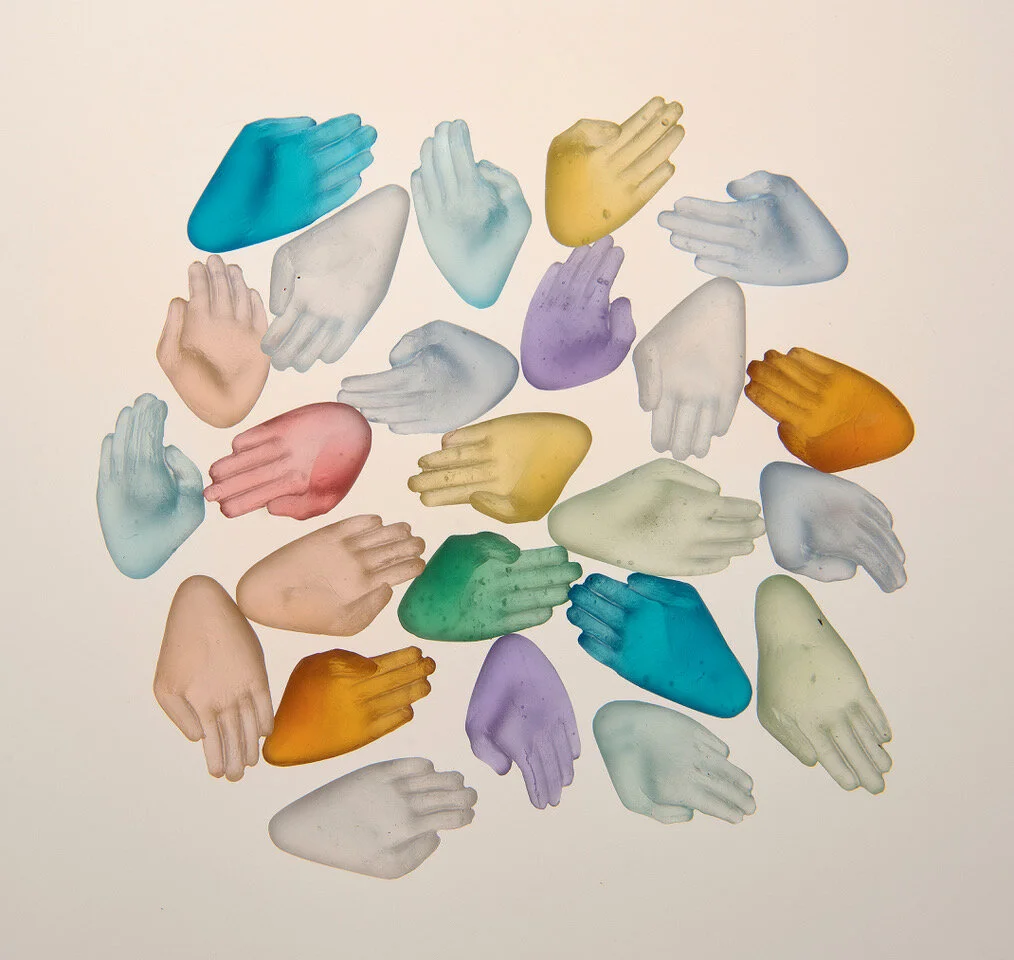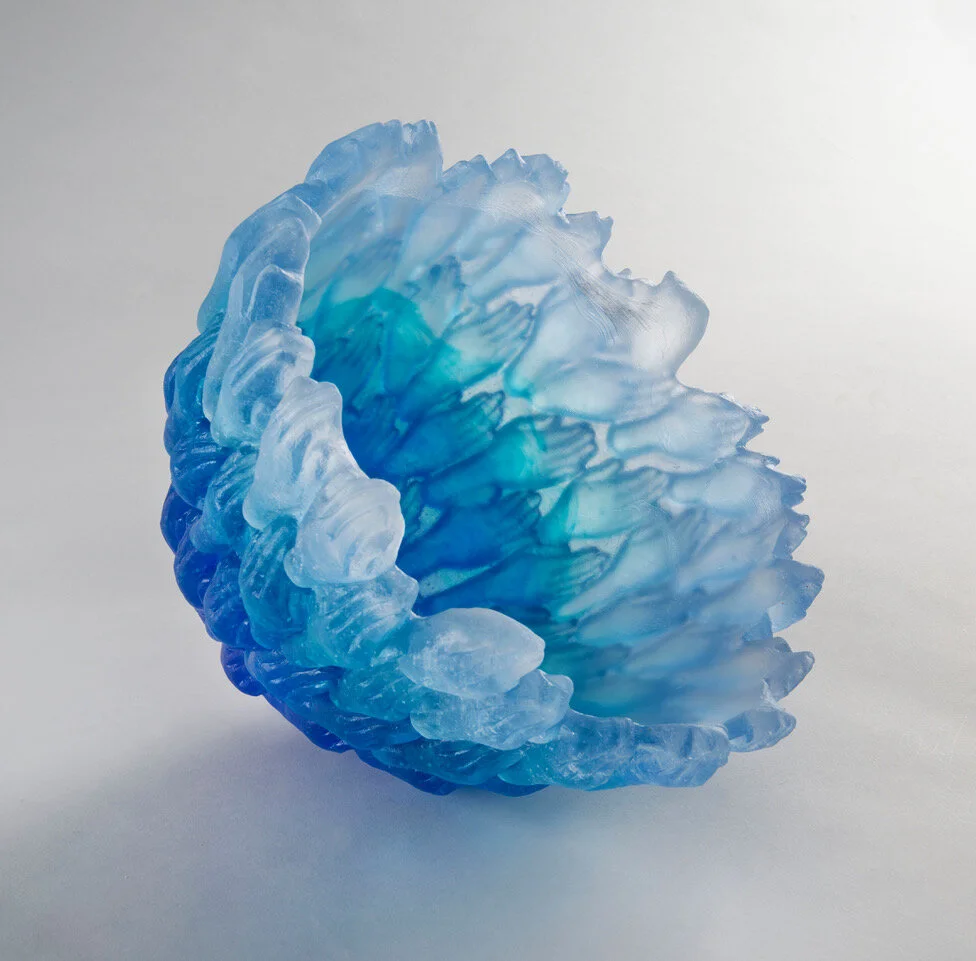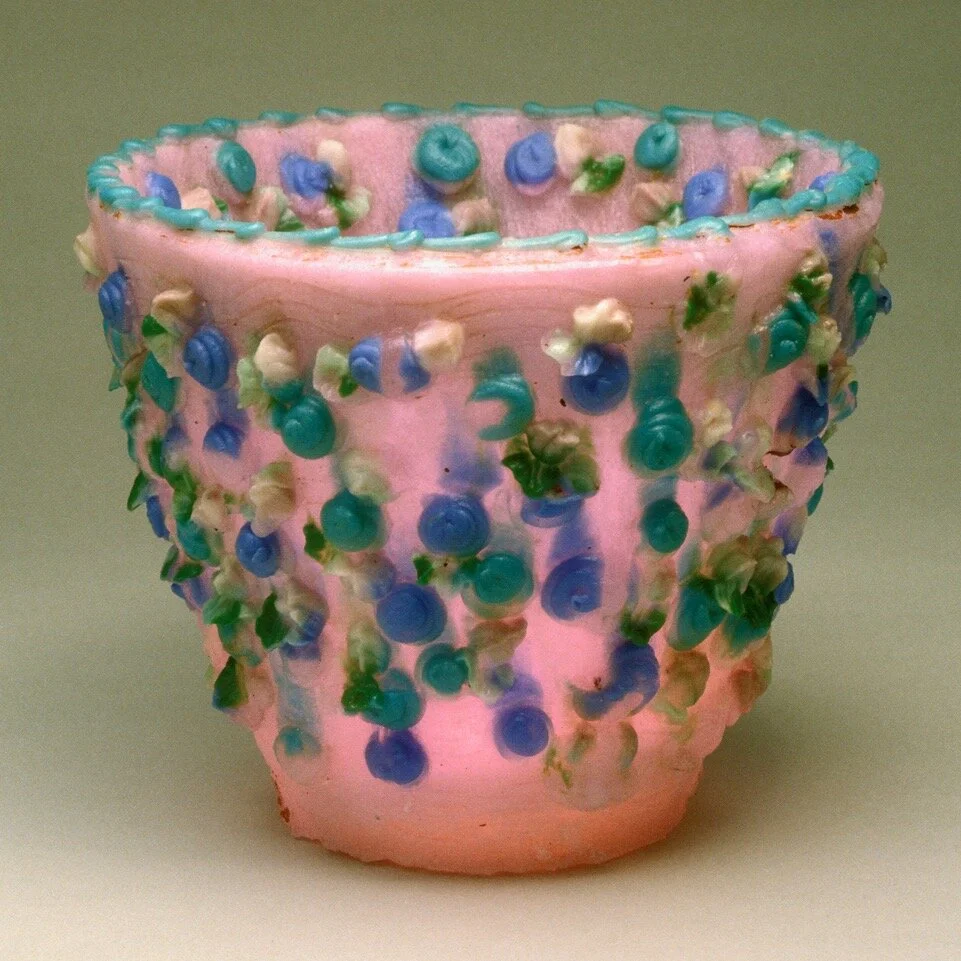FAQS
Below are questions I often get asked at shows and also some answers to others in case you’d like to know! Some of the answers are long, so scroll down to the one(s) that interest you!
Check back, as I’ll add to the list as questions arise.
1. What does Pate de Verity mean?
Pate de Verity is a pun on the process I use called pate de verre casting. This type of glass casting takes place in a kiln (kiln-casting) and traditionally refers to the fusing of small glass particles in a mold. See Pate de Verity’s process page for more details about the technique.
Pate de verre literally translates as “paste of glass,” while Pate de Verity means “paste of truth,” which I made-up as a fun play on words, but also as a testament to my passion for what I do.
2. What inspires you?
So much! What currently inspires me is making objects that seem precious and spark in the viewer a familiarity, connection to or remembrance of a notable experience, loved one, etc.
In particular, I’m inspired by objects – daily use implements, religious objects or those used for ritualistic purpose, amulets etc. – deemed special by peoples of different cultures. My primary interest is in the relics and symbols from ancient Mediterranean and Buddhist cultures. I want to know why certain objects hold such importance and what they mean.
When creating my forms, I’m drawing from a broad visual vocabulary. I assemble elements instinctually, not trying to “force” an object to function in any way other than to be enjoyed as sculpture. I want my work to be perceived as beautiful and evocative, even if the piece may actually function as a bead, bottle stopper, goblet or vessel.
3. What’s with all the hands?
When I was young, I was always frustrated by the fact that I couldn’t draw hands, until I finally figured out how to sculpt them! It’s since become an obsession.
However, the true answer is that I make hands because we all, everyone everywhere has them; they are intrinsically important, and we depend on them probably more than we realize, (I’m not trying to be glib!) This means they provide commonality, a connection point between us AND we rely on them to communicate when language fails. They are powerful symbols in their ubiquity.
4. OK – what about the Hearts, Brains, and Eyes? They’re kinda cool, but also a little creepy….and if I bought one, what would I do with it?”
I love sculpting these forms but more importantly, just like with hands, I’m interested in the human “parts” that help us to communicate. (Thus, I don’t make livers and kidneys as some people have asked.) Hearts, brains and eyes each play unique roles in how we relate to each other.
In simplistic terms, hearts symbolize compassion and kindness, while brains refer to logic and practicality. Together, the two create balance, produce (hopefully) thought-fulness and keep us from going haywire! Eyes - there’s vision and then there’s the clarity that comes with seeing.
For me, when I fashion each in glass these meanings become tangible, and the objects precious. Place them on a windowsill and watch them glow in the light. Like they do for me, they might just remind you to try to be the person you want to be.
The customers who buy these are frequently in the medical profession or have a loved one who’s had a tangle with one of the “trio.” One couple bought a heart-brain set to remind them that their marriage is the perfect balanced match!
5. How did you become interested in casting glass?
Here’s one answer:
As an undergrad I trained as a sculptor, and most of my work was made from bread I baked in my art school’s foundry oven. After college, I had a career as the head pastry chef at a 4-star restaurant in Philadelphia. After I developed a big-time wheat allergy, I continued my vocational “sugar-obsession” as a cake decorator/sculptor /artist-in-residence at a gourmet cake company (the MOST fun job ever).
Fast-forward to grad school where I transitioned from baking in an oven to casting glass in a kiln. I saw it as baking with a sense of permanence (instead of making something that would disappear in one, albeit delectable, bite). My new passion led to research into the pate de verre casting process (mentioned in question #1), which often results in glass pieces that are very candy-like.
In the 80s and 90s I began using my pastry skills, including casting from chocolate and maple sugar molds to create cake-like vessels from glass. Notice some of my early pate de verre work that was made by piping liquid chalk from a pastry bag.
So, almost 40 years later, my work has evolved and looks less like icing and more like translucent molded candies. Admittedly I’m still a sugar junky, and thankful that glass is calorie-free.
6. How long does it take to make your work?
Forever.
It’s a hard question to answer, but the simplest piece from start to finish can take 1 week, others can take many months. Kiln-casting is arguably the lengthiest of glass-working processes.
7. Why does your work cost so much more than most blown glass work of similar size?
For instance, why are your cast goblets more expensive than blown goblets?
See the answer to #6! The time it takes to kiln-cast and finish glass castings vs. to blow glass can be exponentially greater.
8. How should I display my new piece?
First of all, place it in a spot where you can enjoy it on a daily basis. Ideally, that spot is well-lit (windowsill, tabletop) as glass made by casting has the ability to hold light and glow from within.
Some of the talismans stand up; others, including the yads and pointers, can be displayed on a surface or be mounted on a wall. Each piece mounts differently, so please ask for the best method relative to the piece you choose. Wall-mounted shelves are also nice ways to showcase this work. If you live close by, I’ll come and hang it for you!
All of the reliefs/mandalas, slightly heavier than most of the talismans, are backed with an aluminum bracket that fits neatly over a screw, nail or lag bolt. They hang easily and securely.
9. Shipping,…how do you package my piece so it stays safe in transit?
I’ve been shipping glass for decades and have learned how to do it properly along the way! Pate de Verity will pack your precious glass piece with great care.
Your purchase may come in a larger box than you anticipate as it’s important to provide plenty of cushioning to protect against any jostling along the way. Some objects, due to their size, weight or degree of fragility may require double-boxing.
Just in case, I always encourage my customers to purchase full-value insurance!
If you live in the Philadelphia area, you are welcome to make arrangements to come pick-up your piece.









